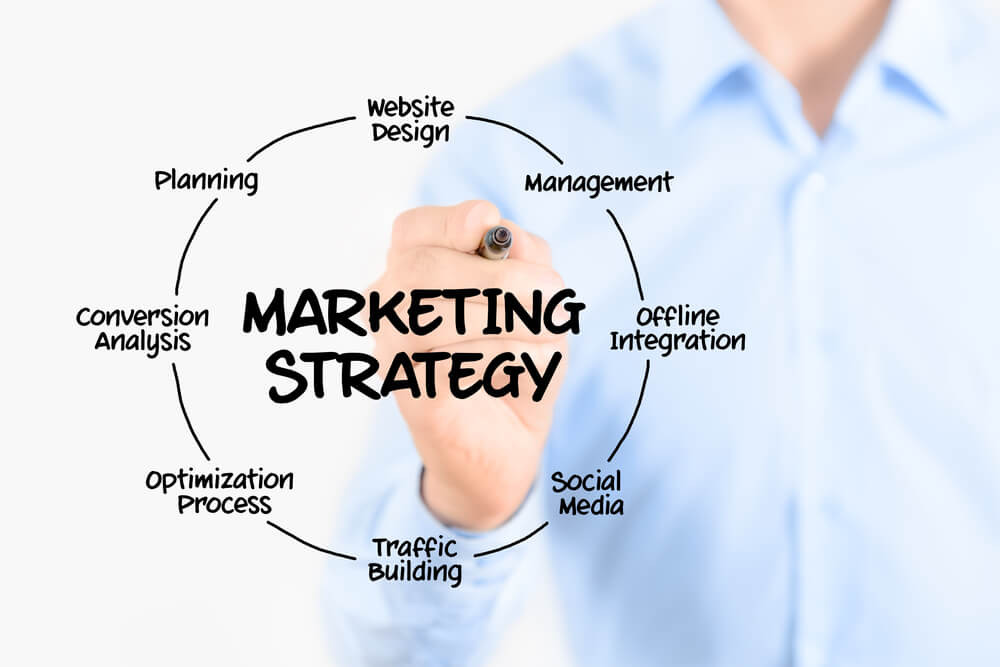
Developing Effective Enterprise Content Management Strategies
On April 13, 2023 by Morthe StandardContent is considered the king in the digital world, and enterprises increasingly focus on leveraging it to understand their customers better and increase their market presence. Content is used in various formats, such as blogs, social media posts, articles, press releases, and website content. As the content grows exponentially, it becomes essential for organizations to have an effective enterprise content management strategy in place.
Enterprise content management (ECM) manages the entire life cycle of an enterprise’s digital content. It is a strategic approach to creating, storing, organizing, and distributing content across an organization. ECM is becoming increasingly important as organizations move toward more digital content and away from print materials.
Enterprise content management (ECM) is an integrated set of strategies and tools to help organizations create, manage, store, secure, and deliver digital content. It is a comprehensive system that encompasses all aspects of an organization’s life cycle of digital information. ECM enables organizations to streamline their operations by providing a central repository for documents and other forms of data that can be accessed from anywhere in the world.
In today’s hyper-connected digital landscape, where large amounts of information are created daily, companies must have a comprehensive strategy for managing their digital assets. ECM systems provide organizations with control over the storage, retrieval, access rights, and security of content stored within the system. By taking control of these processes, organizations can ensure that their content is stored, managed, and accessed securely and efficiently.
An effective ECM strategy should provide an organization with the necessary tools to manage its digital assets effectively. This includes document management systems for creating, storing, categorizing, and retrieving documents; workflow management tools for coordinating tasks across teams; search capabilities for quickly locating information; data governance tools for setting up rules regarding who can access what information; security measures to protect confidential data from unauthorized access; and analytics capabilities to monitor system usage patterns.
Developing an effective ECM strategy requires a comprehensive understanding of the organization’s goals and objectives, the content it produces, and the technology it uses. Here are some tips for developing an effective enterprise content management strategy:
- Establish a Content Governance Model
Content governance is the practice of defining and enforcing rules and standards for creating, storing, and distributing all digital content. It helps to ensure that content is consistent and up to date. Establishing a content governance model will allow organizations to create, store, and distribute content in a more organized and efficient manner.
- Create a Content Strategy
A content strategy should be developed to ensure that all content is relevant, engaging, and meets the goals and objectives of the organization. A content strategy should include objectives, target audience, content types, distribution channels, and tracking methods.
- Establish Policies and Procedures
Creating policies and procedures for the content management process will ensure that all content meets the organization’s standards and is distributed effectively. These policies and procedures should include creating, editing, and publishing content guidelines.
- Leverage Automation
Automation is a powerful tool that can be used to streamline the content management process. For example, automation tools can automate publishing, tagging, and indexing content. Automation can also ensure content is distributed to the proper channels and audiences.
- Develop an Archiving System
An archiving system should be established to ensure that all content is stored in an organized and secure manner. This system should include a way to store content, an indexing system, and access and retrieve content.
- Monitor Performance
It is crucial to observe the Performance of content to ensure that it reaches the desired audiences and meets the organization’s goals. Therefore, performance metrics such as engagement rates, website visits, and sales should be monitored regularly.
These are just a few tips for developing an effective enterprise content management strategy. An effective plan will help organizations to create, store, and distribute content in a more organized and efficient manner. It will also help ensure content is engaging, relevant, and meeting the organization’s goals and objectives.
Finally, organizations should consider how their ECM strategy integrates with other systems. For example, an effective ECM strategy should be able to integrate with other systems, such as customer relationship management (CRM) systems, to ensure that content is adequately shared across the organization.
Overall, an effective ECM strategy can help organizations reduce costs, improve efficiency, and boost customer satisfaction. By utilizing the components of an ECM strategy, organizations can better manage their content lifecycle, analyze and track the Performance of their content, store and manage digital assets, and streamline processes.
Table of Contents
You may also like
Recent Posts
 Unleashing AI Power for Small Business Marketing Success
Unleashing AI Power for Small Business Marketing Success Pourquoi Choisir Une Structure En Acier Pour Vos Projets En Afrique ?
Pourquoi Choisir Une Structure En Acier Pour Vos Projets En Afrique ? Top IPTV France Providers: Finding the Best Service for You
Top IPTV France Providers: Finding the Best Service for You The Importance of Innovation Management in Business Success
The Importance of Innovation Management in Business Success How to Measure Lab Diamond Ring Size
How to Measure Lab Diamond Ring Size Web hosting plan: pro and cons of shared hosting and VPS hosting
Web hosting plan: pro and cons of shared hosting and VPS hosting White Sapphire vs. Diamond: The Ultimate Comparison
White Sapphire vs. Diamond: The Ultimate Comparison How Pawnbroking Works: A Step-by-Step Guide to Pawn Loans
How Pawnbroking Works: A Step-by-Step Guide to Pawn Loans GH Express LLC: Your Strategic Partner for Business Success in the U.S.
GH Express LLC: Your Strategic Partner for Business Success in the U.S.Novita Diamonds Shines a Light on Women’s Empowerment with Dress for Success Partnership
Buying Ethereum Down Under: Your Guide to Purchasing ETH in Australia
 Exploring the Brilliance of Lab-Grown Diamonds: Understanding the 4Cs
Exploring the Brilliance of Lab-Grown Diamonds: Understanding the 4Cs Lab Diamonds: The Top Choice for Ethical, Affordable, and Sustainable Brilliance
Lab Diamonds: The Top Choice for Ethical, Affordable, and Sustainable Brilliance SEO Backlink Services and Template Customization by a Pennsylvania SEO Expert
SEO Backlink Services and Template Customization by a Pennsylvania SEO Expert The Sparkle of Sustainability: Lab Grown Diamonds Adelaide
The Sparkle of Sustainability: Lab Grown Diamonds Adelaide
Popular Posts
 Leveraging User Forums and Communities: Online iPhone Selling
Leveraging User Forums and Communities: Online iPhone Selling Why You Should Be Adding Content to Google My Business
Why You Should Be Adding Content to Google My Business 360-Degree Digital Marketing Services: What’s included?
360-Degree Digital Marketing Services: What’s included? What are the Different Types of Marketing?
What are the Different Types of Marketing? 5 Tips for Sharing Files and Information Online
5 Tips for Sharing Files and Information Online 6 Major Factors To Consider Before You Hire Marketing Agencies Auckland
6 Major Factors To Consider Before You Hire Marketing Agencies Auckland First-Time Buyer’s Guide to Industrial Sewing Machines
First-Time Buyer’s Guide to Industrial Sewing Machines Benefits of Hiring a Full Time SEO Specialist
Benefits of Hiring a Full Time SEO Specialist Tips For Effective And Appealing Web Design
Tips For Effective And Appealing Web Design 3 Biggest Strategies That Can Help You Scale Up Your Company
3 Biggest Strategies That Can Help You Scale Up Your Company Using An SEO Consultant To Amp Up Your SEO Strategy During COVID-19
Using An SEO Consultant To Amp Up Your SEO Strategy During COVID-19- What Is The Essence Of Enterprise Resource Management Systems
How To Make Your Air Conditioning Business Ready For Google?
 Why Should You Add Comments To Your Blog?
Why Should You Add Comments To Your Blog?) 3 Reasons Why Forecasting Sales Is Important For Businesses
3 Reasons Why Forecasting Sales Is Important For Businesses
Most Viewed Posts
 API Integration Best Practices: Ensuring Secure and Scalable Solutions
API Integration Best Practices: Ensuring Secure and Scalable Solutions On The Whole Learning Elaborating Open Source API Tools
On The Whole Learning Elaborating Open Source API Tools Eliminate Annoyance By Fixing These Google Drive Problems
Eliminate Annoyance By Fixing These Google Drive Problems Reasons To Kick-Start Node JS Centric Product Development With Full-Swing
Reasons To Kick-Start Node JS Centric Product Development With Full-Swing Reasons Why It Is Important to Select the Best Online Education Platform for a Programming Assignment
Reasons Why It Is Important to Select the Best Online Education Platform for a Programming Assignment 6 Benefits of Using a Good Website Builder
6 Benefits of Using a Good Website Builder Techinques To Take Services For App Developers
Techinques To Take Services For App Developers- Four compelling reasons why the cloud makes it easy is the ideal IoT application
 A Guide To Hiring The Best Web Development Company
A Guide To Hiring The Best Web Development CompanyThe Best Tools For Mobile-First Indexing Strategy Development
